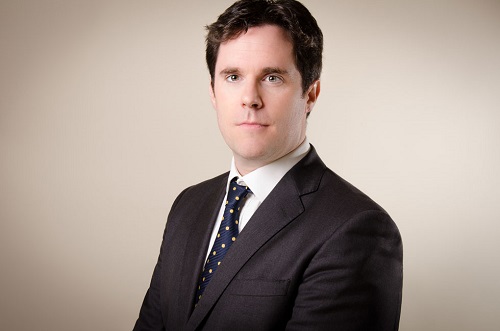There are four versions of Bach’s St John Passion. The first was heard on Good Friday 1724, in the St Nicholas Church in Leipzig, during Bach’s first year of employment in the city. The following Easter Bach reworked it, replacing the opening and closing choruses, substituting some new arias, and making other minor changes to the recitative and to the part-writing in the turba choruses. In the latter months of 1724, Bach had been working on a ‘chorale cantata cycle’ for each Sunday and feast of the ecclesiastical year, based on Lutheran chorales, and though it was left unfinished – perhaps owing to the death of his librettist – some of these chorales were inserted into the 1725 Passion, thus reflecting the development of his compositional techniques. The two later versions of 1732 and 1749 excised the 1725 changes, and the St John Passion that we hear most frequently today conflates the tweaks to the instrumentation made in 1749 with the text of 1724.
At the Barbican this Good Friday, Laurence Cummings and the Academy of Ancient Music offered us the opportunity to hear the 1725 St John Passion. And, it was a refined and poised performance. There was little one might fault about the technical accomplishment of the singers and instrumentalists, and much fine expressivity that one might praise. The emphasis was on contemplation and reflection – perhaps an outcome of Bach’s revisions, on which more below – but, while it was Handel who was a man of the theatre (and ‘theatricality’ in church music was very much discouraged in Bach’s day), something of the drama which is such a powerful part of the musical and spiritual experience of hearing Bach’s Passions at times felt lacking here.
The twelve singers were positioned in a horseshoe format, each on their own podium, and within them nestled the twenty musicians, including Cummings at the harpsichord, with viola da gamba player Reiko Ichise and theorbist William Carter moving to the front stage-left in Part 2. The small forces, probably corresponding to the size of the ensemble in Bach’s employ in Leipzig’s churches of St Nicholas and St Thomas, suggested a desire to create an intimate meditativeness to which the wide, spacious Barbican Hall does not readily lend itself. And, in any case, the singers were distanced from each other in their curving ring, and the individual voices were clearly audible within the ensemble – perhaps emphasising the responsibility of each one of us for Christ’s suffering, but not always conjuring the force and spirit of the collective in the chorales and choruses.
The vivid crowd choruses were sung with impeccable precision but, for this listener, not quite enough bite. Though the cries that “Jesus of Nazareth” be sought out seemed, because of the stage arrangement, to come from all angles, they were not particularly vicious; the polyphonic tumult, “Wir haben keinen König den den Kaiser” (We have no king but Caesar) might have had more dynamism. I’d have liked, too, more differentiation between the vocal character of Christ’s devotees and those determined to destroy him. The chorales were polished, both plaintive and assuaging, and generally flowing, though Cummings did encourage some pointing of the textual punctuation which seemed more akin to the motet or madrigal than to the voice of congregated lay believers.

Nicholas Mulroy was our Evangelist (replacing the originally advertised Robin Tritschler), and while his placement at one end of the horseshoe curve meant that this narrator was far removed from quite a few in the auditorium, Mulroy was a fluent storyteller, judging the flow of the narration discerningly, and communicating with conviction and nuance, even if a sense of the Evangelist’s personal friendship and loss was not at the forefront of this account. After settling himself in, Mulroy was confidently off-score – impressively direct, discreetly urging us to take note. Mulroy had a sure sense of the pacing of the recitative, and the textual details made their mark: we felt the sharp sting as the officer’s palm struck Jesus’s cheek; Peter’s tears of guilt were a twisting, chromatic gut-wrench; the announcement of the nature of Christ’s death was portentously sombre; and, Pilate’s scourging of Christ was a melismatic torture, underpinned by sharply defined cello stabs.
There was pathos, too, in the subsequent image of Jesus wearing the crone of thorns and purple robe; and a subtle increase in intensity as Pilate brought Jesus before the Jews, “Sehet, das ist euer König” (Behold your King), while the confirmation that Pilate, responding to the crowd’s demands, delivered Jesus to be crucified (“Da überantnewortete er ihn, daß er gekreuziget würde”) was plaintively restrained. And, there was true dignity in the account of Christ’s crucifixion, “Allda kreuzigen sie ihm”, the well-judged pause which followed Pilate’s writing on the cross, “Jesus von Nazareth, der Jüden König”, heavy with pathos. When the three Marys stood beside the cross, Mulroy conveyed, without mannerism, every ounce of the pain felt, in body and soul; and the slow, muted noting of Christ’s passing, “Und neiget das Haupt und verschied”, was telling.
The soloists embodying the other characters in the biblical narrative were expressive, if not always dramatically engaging. Dingle Yandell (replacing the originally advertised Matthew Brook) has a bass voice replete with gravitas and dark colours and he was a wonderfully sympathetic Christus – earnest, vulnerable, forthright. Whether, fiercely responding to the questioning of the High Priest, “hab ich aber recht geredt, was schlägest du mich?” (if I have spoken well, why smitest thou me?), gently beseeching his mother (“Weib siehe, das ist dein Sohn!”), or faintly revealing his frailty (“Mich dürstet” (I thirst)), Dingell made Christ a human figure whose suffering we had both caused and shared. But, despite George Humphreys’ vibrant presentation of Pilate’s dilemmas, the two interrogations which are in many ways the heart of the work, fell somewhat flat dramatically as Dingell projected his replies to the audience while Humphreys, placed behind him, sang to Christ’s back.

The alto arias were shared between Anna Harvey and Jessica Dandy, the former focused and assertive in ‘Von den Stricken meiner Sünden’ – accompanied by two oboes (Leo Duarte and Robert de Bree), agile double bass (Timothy Amherst), organ (Jan Waterfield) and harpsichord – with confident ornamentation in the da capo; the latter delivering clear passagework in ‘Es ist vollbracht’ but in an emotive style that was profound but a little out of keeping with the tenor of the whole. Soprano Fflur Wyn (standing in for an indisposed Zoe Brookshaw) sang ‘Ich folge dir’ with brightness and vitality, the dialogues of the two flutes (Rachel Brown and Marta Goncalves) enacting the joyful steps taken in following Christ. Jessica Cale’s purity of tone and confident phrasing enhanced the pained sentiments of ‘Zerfließe, mein Herze’.
Both of the tenor arias in the 1725 version are new, ‘Zerschmettert mich’ replacing the original ‘Ach, Mein Sinn’ and, in Part 2, ‘Ach, windet euch nicht’ taking the place of the bass arioso ‘Betrachte, meine Seel’ and the tenor aria ‘Erwäge’. Hugo Hymas delivered the former with sustained vigour and in the latter evinced real strength and focus through the long phrases, bringing rhetorical force to the textual details and dynamic vitality to the da capo ornamentations. William Gaunt sang the virtuosic ‘Himmel reiße, Welt erbebe’ (Heaven, tear apart! Earth, shake!) with agility and, at times, fierce intensity; this new aria, which integrates three soprano voices who sing lines from the chorale, ‘Jesu, deine Passion’, and two flutes, and thus seems to weave together individual and congregational reflections, was one of the highlights of the performance.
It’s perhaps the framing numbers that most imbue the 1725 with its unique character, though. The restless, surging interweavings of ‘Herr, unser Herrscher’ are replaced here by what seems to be an amalgam of a vocal motet and an instrumental concerto, ‘O Mensch bewein’ – which later found a home as the concluding chorus of Part 1 of Bach’s St Matthew Passion. It marks a theological shift, from an appeal to the God, “Lord our ruler”, to an instruction to “bewail your great sin” – thus, from the heavenly to the earthly. Here, the vocal and instrumental counterpoint was expressive but the overall impression quite light of weight. Then, at the end of the work, the soothing four-part chorale of 1724, ‘Ach Herr, Lass Dein Lieb Engelein’’ is replaced with the chorale ‘Christe, du Lamm Gottes’ which Bach had originally used to conclude a cantata submitted as part of his application for the post at Leipzig, and which is positioned theologically within the Eucharist service, thus symbolically integrating related narrative and active devotion. Here, the penultimate chorus, ‘Ruht wohl’, was beautifully consoling – faith confirmed, and peace ensured – but ‘Christe, du Lamm Gottes’ re-introduced a tone of suffering before the final shift from minor to major tonality, and short concluding Amen.
It’s as if the journey from darkness to light in the 1724 Passion is reversed, or at least complicated, in this 1725 score. Cummings and the singers and musicians of the AAM gave a performance that left nothing to be desired technically but which perhaps preferred refinement over such spiritual restlessness.
Claire Seymour
JS Bach: St John Passion (1725 version)
Academy of Ancient Music: Laurence Cummings (director & harpsichord), Nicholas Mulroy (Evangelist), Dingle Yandell (Christus), Fflur Wyn and Jessica Cale (sopranos), Anna Harvey and Jessica Dandy (altos), Hugo Hymas (tenor) Jonathan Brown and William Gaunt (basses)
Barbican Hall, London; Friday 15th April 2022.